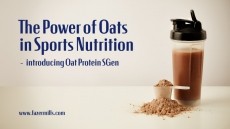Gut microbiome changes in high-protein diet offer weight loss insights

High protein calorie restriction diets have shown clinical efficacy for obesity, but the mechanisms are not yet fully known. There is considerable evidence that the intestinal microbiome plays an important role in the pathogenesis of obesity and higher dietary protein content in healthy volunteers has been associated with increased likelihood of a Bacteroides spp-predominant microbiota. However, there are few human studies supporting an effect of high protein diet (HPD) on the gut microbiome of obesity.
To address this, researchers from David Geffen School of Medicine at UCLA, in Los Angeles, conducted a dietary intervention trial of 80 overweight and obese subjects who were randomised to a calorie-restricted high protein diet (HPD) (30% calorie intake) or calorie-restricted normal protein diet (NPD) (15%) for eight weeks.
Baseline dietary intake patterns were assessed by the Diet History Questionnaire III. Longitudinal faecal sampling was performed at baseline, week one, two, four, six, and eight, and intestinal microbiome composition was assessed by 16S rRNA gene sequencing.
The authors report that subjects on the HPD showed a significant increase in microbial diversity compared to those on the NPD. The HPD was also associated with significant differences in microbial composition after treatment compared to the NPD. Both diets induced taxonomic shifts compared to baseline, including enrichment of Akkermansia spp. and Bifidobacterium spp. and depletion of Prevotella spp.
Their conclusion, reported in Nutrients, is that weight loss diets alter the gut microbiome in obesity and suggest differential effects of HPDs compared to NPDs which may influence the clinical response to HPD.
They note: "Interestingly, individuals with a lactase genotype associated with increased Bifidobacterium spp. abundance had greater adiposity reduction on an HPD than those without this variant, suggesting that Bifidobacterium spp. is an important therapeutic target of HPDs.
"In addition, both diets suppressed the predominant Prevotella genus, Prevotella_9 which has been reported to be enriched in obesity and associated with diabetes as well as progression of fatty liver disease. Its suppression by both HPD and NPD may contribute significantly to the beneficial clinical outcomes with these weight loss interventions."
Microbial changes
The HPD notably induced an increase in intestinal microbial diversity relative to the NPD that was primarily observed in the white and African-American subgroups. This difference between Hispanics and non- Hispanic whites and African-American subgroups could be due to fact that the Hispanic subgroup started with a higher microbial diversity so the HPD was unable to increase it further.
The HPD also induced a significant shift in overall microbial composition which differed from that observed in the NPD control. At the level of individual taxa, this corresponded to a reduction in Prevotella_2 spp., a less-abundant genus within the Prevotellaceae family compared to the Prevotella_9 genus which is dominant within the gut microbiota of Western populations.
Prevotella_2 spp. has previously been reported to be associated with cardiovascular disease risk, suggesting that it has adverse metabolic effects and that its depletion by an HPD could have beneficial effects.
The report states: "The HPD also enriched for Gemella spp., a group of Gram positive cocci that is a significant constituent of the microbiome of the upper gastrointestinal tract but is present at much lower levels in the colon. Its enrichment in the faecal microbiota of subjects receiving an HPD suggests that this dietary change is able to modify the typical colonisation range of Gemella spp. to allow extension into distal regions of the digestive tract.
"It is unclear if there is any functional consequence of this taxonomic shift as there is no literature on the role of intestinal Gemella spp. in obesity. Little is known about the human members of the remaining four genera that were differentially abundant on an HPD."
Fibre effect
While the microbiome effects of the HPD significantly differed from that of an NPD, both diets had a shared signature of taxonomic shifts with particularly striking induction of Akkermansia spp. The study found that baseline levels of Akkermansia spp. were associated with fibre intake, suggesting that dietary changes shared between both diets, namely the emphasis on deriving dietary carbohydrate intake from high-fibre sources, may have driven this change.
Increased Akkermansia spp. is anticipated to have beneficial metabolic effects on adiposity and insulin resistance based on preclinical and human studies. Both diets also increased fecal levels of Bifidobacterium spp. This genus has been reported to reduce insulin resistance and inflammation in animal models of metabolic syndrome.
Source: Nutrients
Jacobs. J. P., et al
"A High Protein Calorie Restriction Diet Alters the Gut Microbiome in Obesity"
https://doi.org/10.3390/nu12103221












